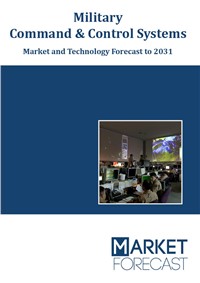Command & Control (C2) technologies continue to evolve and improve with advancements in artificial intelligence, machine learning, big data analytics, and cloud computing. These technologies are enabling commanders to make better-informed decisions, respond faster to changing situations, and achieve greater situational awareness.
One of the significant trends in Command & Control is the shift towards more network-centric operations, where decision-making is distributed among various nodes in the network rather than being centralized in a command centre. This approach allows for greater agility and flexibility, as well as improved resilience against disruptions to the network.
The increasing use of sensors for a wide range of military applications has opened avenues for innovative C2 programmes such as Joint All-Domain Command & Control (JADC2). These systems are often operated autonomously to collect data from many new data points that earlier were not possible to track. New command and control programmes are encouraging to maintain situational awareness and control over multiple platforms simultaneously.
In the early days, the source of information came mostly from humans and some electronic systems. Nevertheless with the evolution towards network-centric and electronic warfare, the volume of sensor-generated data has grown exponentially. The data volume has increased exponentially, pushing for an increase in processing power, better analytical tools and more bandwidth for real-time activity.
These technological enablers are expected to transform the way the military plans, executes and manages joint operations. The use of AI and machine learning technologies in C2 systems have also improved the ability of military commanders to predict and respond to threats in real time.
Cloud-based C2 offers several benefits to military organizations. By leveraging cloud computing, organizations can build more scalable, agile, and cost-effective C2 systems that can enhance situational awareness, improve decision-making, and ultimately support successful military operations.
With such advancements worldwide command and control markets are going to remain dynamic and growing at a pace. This is a challenge as well as an opportunity for defence companies to participate in the modernisation spree.
Covered in this report
- Overview: Snapshot of the Military Command and Control Market during 2023 - 2031, including highlights of the demand drivers, trends, and challenges. It also provides a snapshot of the development plans concerning regions as well as components, types, and platforms. It sheds light on the emergence of new platforms like joint command and control initiatives.
- Market Dynamics: Insights into the technological developments in the data management software and integration of emerging technologies such as artificial intelligence, data analytics, and cyber-security and a detailed analysis of the changing preferences of Military Command and Control solutions around the world. It also analyses changing industry structure trends and the challenges faced by the industry participants.
- Segment Analysis: Insights into the Military Command and Control Market from a segmental perspective and a detailed analysis of factors influencing the market for each segment.
- Regional Review: Insights into present Military Command and Control infrastructure strength and future demand for top countries within a region.
- Regional Analysis: Insights into the Military Command and Control Market from a regional perspective and a detailed analysis of factors influencing the market for each region.
- Trends Analysis - Key Defense Market: Analysis of the key markets in each region, providing an analysis of the Military Command and Control technology expected to be in demand in each region.
- Competitive landscape analysis: Analysis of the competitive landscape of the global Military Command and Control Technology industry. It provides an overview of key companies, together with insights such as product range, strategic partnerships and SWOT analysis.
Segmentation
We have segmented the market by Region, Platform, End-User, and System Element.
Region
- North America
- Asia Pacific
- Europe
- Russia & CIS
- Middle East and Africa
- South America
- Land
- Air
- Naval
- Space
- Integrated
- Army
- Air Force
- Navy
- Homeland
- Othe Govt. Ent.
- Private Entities
- Military Grade Network Equipment and Gateways
- Data Communication Hardware and Software
- Data integration, analytics and visualisation software
- Mission System access control and cyber security
- Displays & Controls
Reasons to buy
- Determine prospective procurement areas based on a detailed procurement plan analysis of the Military Command and Control Technology market over the next eight years.
- Gain an in-depth understanding of the underlying factors driving demand for different Military Command and Control Technology in the leading countries and other potential markets across the world and identify the opportunities offered by each of them
- Strengthen your understanding of the market in terms of demand drivers, industry trends, and the latest technological developments, among others.
- Identify the major channels that are driving the global Military Command and Control Technology Markets, providing a clear picture of future opportunities that can be tapped, resulting in revenue expansion.
- Make correct business decisions based on a thorough analysis of the total competitive landscape of the sector with detailed profiles of the Military Command and Control Technology providers around the world.



